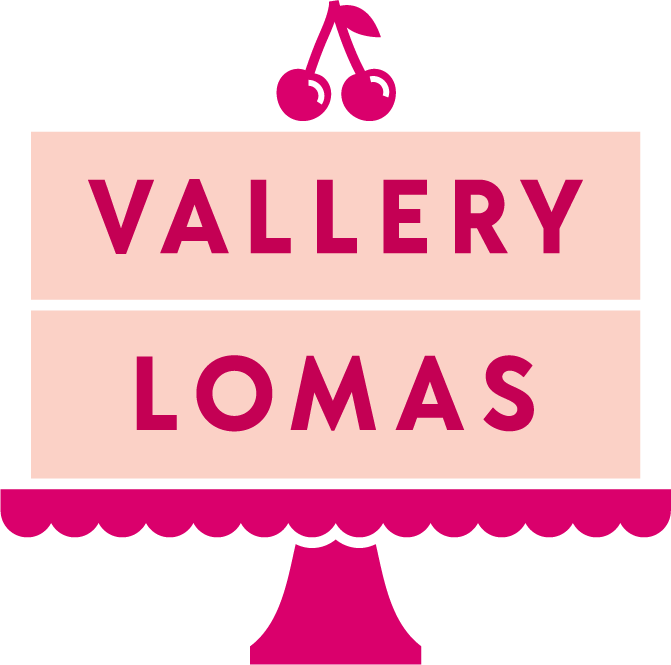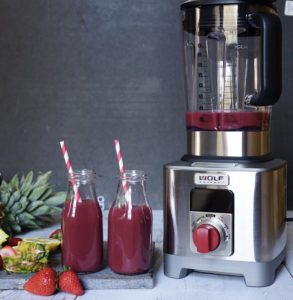Homemade old-fashioned doughnuts make me nostalgic. I’m not sure why, because I certainly didn’t grow up with my grandmother making these. Perhaps their name and uniqueness to the traditional doughnut evokes some wistful feeling of yesteryear. Or maybe it’s in the dense, cake-like texture that makes me sentimental. Whatever the reason, making these doughnuts just felt good. And fortunately, making them is much easier than you might think.
The reward is definitely worth the small bit of effort it takes to make these doughnuts. They have such a unique flavor, and are better than old-fashioned doughnuts I’ve purchased. Although, I shamefully admit that my experience with this wonderful type of doughnut has been limited mostly to the old-fashioned doughnuts for sale at America’s most popular coffee chain 😉
The steps to making these doughnuts are pretty straightforward: Make the dough and let it rest; roll it out and cut it; fry it. The last two steps presented a few challenges, but it was nothing that couldn’t be overcome! I’m a novice doughnut-maker, and I made these with success on almost every doughnut I rolled out (I only lost about 2 doughnuts to mishandling the dough). Plus, I’m sharing the tips that I used so that you can master these!
The first step of making the dough was the easiest. The night before you’re ready to fry your doughnuts, simply measure the ingredients and use your stand mixer to mix them. The dough looked more akin to cake batter. I transferred the dough to a lightly greased bowl, put some plastic on top, and let it sit in the refrigerator over night.
And now, for the fun (and challenging!) part–rolling out the dough and frying it. The dough is very sticky. Unlike pie dough or cookie dough, sticky dough… well.. sticks! It can be tricky (and certainly messy!) to work with. The key to cutting out your doughnuts with such a sticky dough is to use LOTS of flour when rolling out. Also, I rolled the dough between two pieces of wax paper. My technique to not letting the sticky dough stick was to sprinkle a generous amount of flour on a piece of wax paper, scoop out the dough onto the wax paper, sprinkle more flour, top with wax paper, and then roll it out.
The tops of the doughnuts are ready to be glazed!
To cut the dough, I decided to make my life easy by investing in a doughnut cutter (about $5). Of course, you can use any type of round cutter–even a glass. Just make sure whatever you use is well floured. I carefully and lightly peeled off the top layer of wax paper (if it sticks, don’t fret, just try to work with it and sprinkle more flour between that dough and the wax paper next time!). I then used my cutter to cut out the dough. The dough is very fragile, so I used a spatula to carefully lift each doughnut (don’t let them break!) where I transferred them to a well-floured surface to await their fried fate. Doughnut holes aren’t too much fun with old-fashioned doughnuts, so I recommend throwing those in with the scraps for a second roll-out. For the second roll-out, use just as much flour and the technique for the first to prevent the dough from sticking!
Prepare the glaze. Set up your work station because once each batch of doughnuts is fried, they will need to be immediately glazed so that their heat will melt the glaze. Place a cooling rack on a parchment paper-lined cookie sheet .
Once your glaze is prepared and the doughnuts are all neat and ready, heat up your oil and get to frying. I find the process of frying dough fascinating. The dough transforms from thin, limp rings to puffed, rich, state fair-reminiscent goodness. I pretty much never fry food so I have very little experience with the technique of frying food. But, if you follow the times listed in this recipe, you will be able to fry these doughnuts to perfection. I think the most important part of frying these doughnuts is maintaining the proper frying temperature. Plus, you have to remember that after frying a batch, the oil will need a little time to reheat to reach the optimal frying temperature. But, not too long because you don’t want to fry them in oil that’s too hot!
I don’t have a deep fryer, but I do have a dutch oven and an amazing instant-read thermometer. (If deep fryers do indeed maintain temperatures, that could be a worthy investment for someone who wants to make a lot of these doughnuts, as I spent much time/energy on adjusting the oil’s temperature.) I added about 3 inches of vegetable oil to my dutch oven, and adjusted the heat until my thermometer read 325 F. And now, for the fun part: carefully dip each doughnut into the hot oil. The doughnuts need some room to bounce around. So I recommend doing no more than three at once. The dough will immediately sink, but will rise to the surface after about 15 seconds. Once they rise, flip em. Wait two minutes, and flip em again. Wait another two minutes and flip them again. Wait one minute, and flip. Finally, wait one more minute, and then remove to the prepared cooling rack/cookie sheet.
The doughnuts have two sides. The top should contain the ridge that’s unique to old-fashioned doughnuts. That ridge is the perfect reservoir to hold the glaze. Place the doughnuts bottom side up on the cookie sheet and spoon glaze over them. Then, turn them over and spoon more glaze over them. Repeat the frying and glazing until you’re all done. These can be served immediately, or stored in an air tight container. These doughnuts keep tremendously well, as the glaze serves as a barrier to lock in their freshness. They’re even better the second day. Mine kept four days, and would have kept even longer—although I’m not sure anyone will be able to keep these around that long without eating them!
Old Fashioned Doughnuts Recipe
Makes 8 large doughnuts using a 3.5″ doughnut cutter
*Alternatively, you can use a 2.5″ doughnut cutter to make 14 smaller doughnuts. For smaller doughnuts, reduce each 2 minute frying cycle by 30 seconds, and each 1 minute frying cycle by 15 seconds.
Dough
255 grams cake flour, sifted (2 and 1/3 cups)
1 1/2 tsp baking powder, sifted
1 tsp salt
100 grams granulated sugar (1/2 cup)
2 tablespoons unsalted butter at room temp.
2 large egg yolks
½ teaspoon vanilla extract
150 grams sour cream (2/3 cup)
at least 4 cups vegetable oil
Classic Doughnut Glaze
454 grams confectioner’s sugar (1 pound)
1/2 teaspoon vanilla extract
1/4 teaspoon salt
1 tablespoon honey
75 ml milk (1/4 cup + 1 tablespoon)
Method
Make the Dough
In a medium bowl, sift together the cake flour and baking powder. Whisk in the salt. In a stand mixer, with the paddle attachment, add granulated sugar and butter and mix on low speed for about one minute. Add egg yolks and vanilla extract. Increase speed to medium and mix for one minute.
Reduce speed to low and add 1/3 of the flour mixture and mix until just combined. Add half of the sour cream and mix until just combined. Continue adding flour and sour cream, alternating, beginning and ending with the flour mixture, until just combined.
Transfer the dough to a lightly-oiled glass bowl. Cover with plastic and let the dough rest in the refrigerator overnight (or at least two hours).
Prepare the Glaze
Whisk together all of the ingredients in a bowl until combined. Set aside until ready to use. The glaze can be stored in an air tight container at room temperature up to one week. You can try the classic glaze outlined above, or the lemon-honey glaze listed below! Lemon is perfect to balance out all of the sweetness of the glaze.
Prepare the Doughnuts*
Remove the dough from the refrigerator. The dough will be very sticky. Generously flour a large piece of wax paper. Place the sticky dough on the wax paper. Generously flour the top of the dough, and place a second piece of wax paper on top. Roll the dough to 1/2 – 3/4 inch thick. Carefully remove the top piece of wax paper (if the wax paper sticks, use more flour next time.) Generously coat your doughnut cutter with flour. Cut the doughnuts, coating the cutter with flour between each cut. Use a spatula to carefully remove each doughnut round to a well-floured cookie sheet. Gently brush off any excess flour on each doughnut round.
Gather the doughnut holes and scraps, and repeat. Transfer to the refrigerator while you prepare the glaze, heat the oil, and prepare the glazing surface. Place a cooling rack in a parchment-paper lined cookie sheet. This needs to be prepared in advance because once the doughnuts are fried, they need to be immediately glazed.
Prepare the oil by heating to 325 F. Once the oil reaches 325 F, gently place 2-3 doughnut rounds in the oil (the doughnuts need plenty of room to bob around). They will immediately sink, then rise to the surface after about 15 seconds. Once they rise, gently flip them over. After two minutes they should be gaining some color. Flip them again. After two minutes, flip again. After one minute, flip once more. After another minute, remove from the oil and place on the cooling rack-lined cookie sheet, bottom side down.
Spoon glaze over the bottoms of the doughnuts. Flip over, and spoon glaze over the tops of the doughnuts. Repeat until all of the doughnuts have been fried and glazed. Serve immediately, or store in an air tight container for up to four days.
*Make sure to thoroughly read the blog post in addition to the directions listed here.
Lemon-Honey Glaze
350 grams confectioner’s sugar
1/2 teaspoon vanilla extract
1/4 teaspoon salt
1 teaspoon honey
75 ml fresh-squeezed lemon juice (1/4 cup + 1 tablespoon)
*This recipe was adapted from Now-Forager.
Did you make this receipe?

Share this recipe



















comments